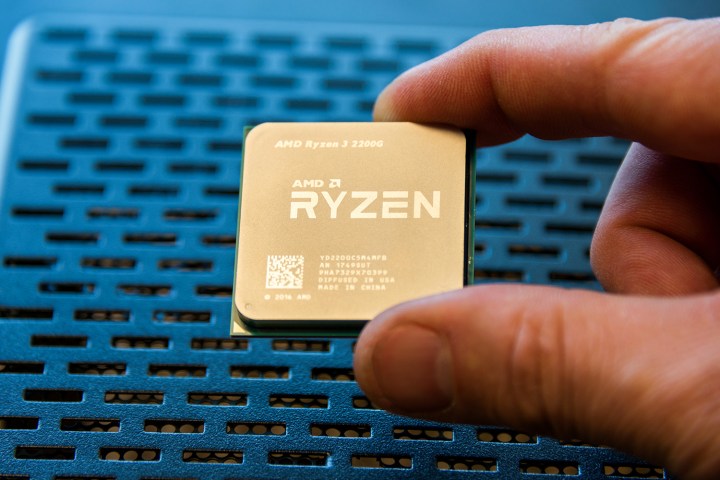
AMD may soon be able to do more than offer credible competition for Intel with its Ryzen hardware. By 2019, it may leapfrog Intel entirely, skipping ahead a die shrink by offering 7nm CPUs and graphics cards while Intel struggles to reach mass-production yields of its long-promised 10nm Cannon Lake CPUs.
Leaked AMD roadmaps made it online earlier in 2018, showing us a planned progression of the company’s Zen architecture through Zen+ chips in 2018 — the Ryzen 2000 series — to Zen 2 in 2019. While Zen+ chips represented a die shrink from 14nm to 12nm, Zen 2 is a much more impactful leap, sidestepping 10nm and skipping straight to 7nm. Now, AMD confirmed it’s on the way to making that a reality.
AMD told investors during a recent earnings call — per Engadget — that it had begun to sample Zen 2 processors in preparation for their 2019 debut. AMD is also planning to update its graphics chips with the same die-shrunk hardware and stated on that same call that it was also testing Radeon graphics cards using 7nm, Vega hardware — though they were categorized as machine learning GPUs.
Taiwan Semiconductor Manufacturing Company (TSMC) is the fabricator tipped to lead the production of AMD’s next-generation CPUs and graphics chips at the new 7nm die size, though this did come as a surprise when first realized, as AMD typically uses GlobalFoundries, which it divested itself from in 2009. TSMC typically manufacturers Intel CPUs, too, so we will need to keep an ear out for how AMD yields are progressing for the new generation in the lead up to its release since Intel has famously had so many issues with the production of its 10nm hardware.
Questions still remain about its plans for new graphical hardware. AMD continues to face supply and pricing issues of its popular graphics cards and Nvidia’s upcoming Volta generation could put even more pressure on AMD to respond. Graphics cards for machine learning make a lot of sense considering the increased importance that industry has to AMD’s bottom line, but gamers will certainly be wondering when it will return its focus its users who have been important to it over the years.




